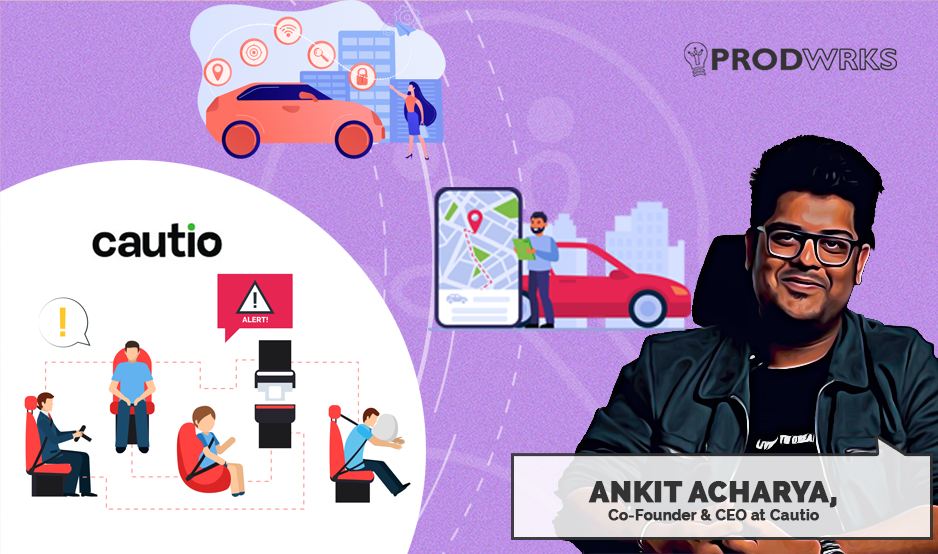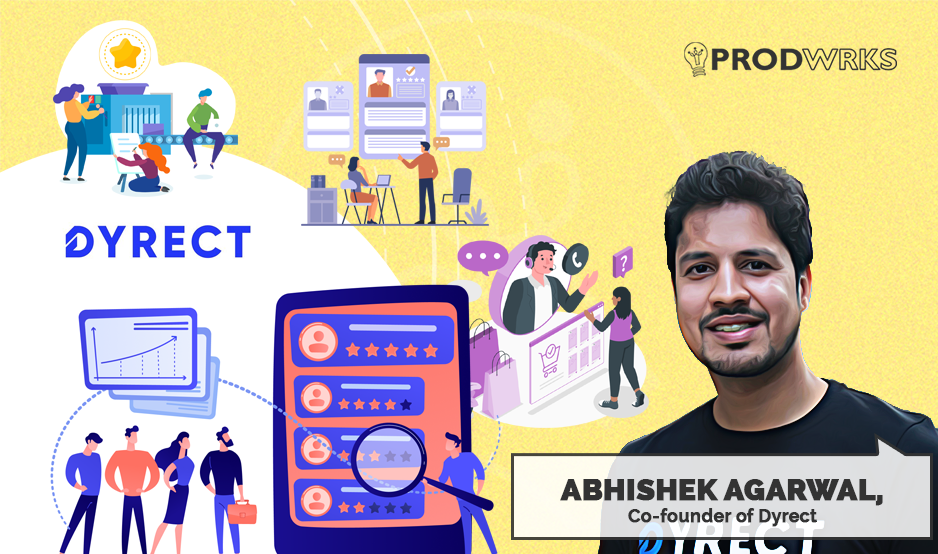
The battle for the customer is won and lost on a thousand tiny fronts in the D2C world. Brands obsess over acquisition costs, conversion rates, and even the perfect “unboxing” experience. Yet, once a product is sold, brands enter a dangerous blind spot: the post-purchase experience.
Every delayed shipment or faulty product chips away brand loyalty and long-term profitability. The cost of fixing it in terms of time, manpower, and returns can be staggering. But what if this post-purchase experience could be transformed into a profit-center instead of a liability? What if it becomes a powerful engine for customer retention and unlock new revenue?
That’s the problem Dyrect is solving.
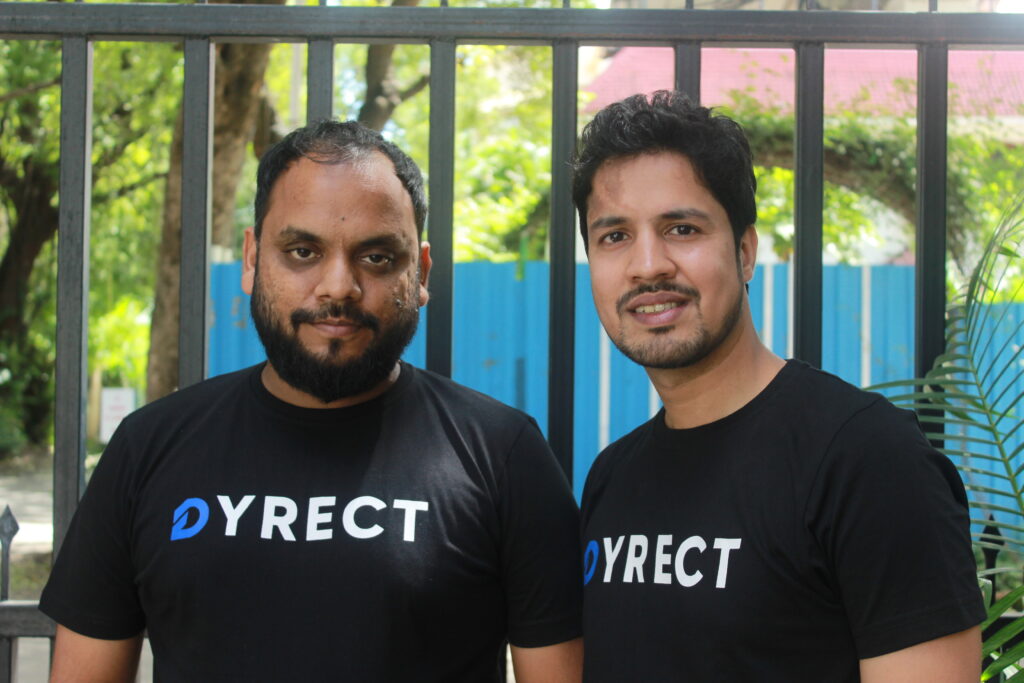
Founded in 2022 by Pune-based entrepreneurs Abhishek Agrawal and Yogesh Miharia, Dyrect is a bootstrapped, US-headquartered startup reimagining the post-purchase journey of over 150 global D2C brands across the US, Canada, the UK, Singapore, and India.
From household names like Syska and Neiman to global giants like Saint-Gobain, Dyrect is helping brands turn post-purchase support into loyalty engines. In this process, they’re on the trajectory to hit $1 million in ARR by year-end.
In ProdWrks, we unpack the product journey story of Dyrect and of its co-founder, Abhishek Agrawal. We learn how they’re transforming post-purchase experience, a chaotic afterthought for most brands, into a powerful growth lever by identifying and solving high-value problems for global D2C brands.
Abhishek’s Indirect Path to Dyrect
Abhishek’s path to founding Dyrect was anything but direct. Hailing from a business family in a tier-two city in Madhya Pradesh, he was the first in his family to pursue engineering and a corporate job. After a few unfulfilling years at Cognizant, a short stint teaching underprivileged children with the non-profit Teach for India, proved to be the unlikely catalyst for his entrepreneurial journey.
The experience was profound, grounding him in the realities faced by the vast majority of the population and stripping away the fear of failure. “What worse can happen anyway?” he reflects. “As an individual, I got the courage to start something on my own.”
This newfound courage led him down the entrepreneurial path in 2017. His first significant venture in the D2C space was a company called NeuroTags. The idea was technologically sophisticated: replacing the now-obsolete physical holograms on product packaging with intelligent, counterfeit-proof QR codes.
“We said, why can't we make a digital solution, which is error-proof and fake-proof, and replace these holograms with QR codes instead?” Abhishek explains.
A customer could scan the code to authenticate the product and trace its entire history. It was a clever solution to a real problem, primarily targeting large enterprises in India. But, COVID-19 hit. Production lines halted, supply chains froze, and NeuroTags’ momentum stalled.
However, it paved the path for Dyrect. An idea that was born from customer interactions.
What is Dyrect?
Dyrect is a one-stop solution for warranty infrastructure for modern D2C brands selling physical goods. Trusted by hundreds of brands of all sizes, Dyrect is used for post-purchase customer acquisition, engagement, and retention—both in-store and online.
In mid-2022, Dyrect was operationalized, but its conceptual foundation was laid in those deep customer conversations during the pandemic with clients of NeuroTags.
“While we were working on QR codes for NeuroTags, brands’ marketing teams used to come and say, ‘Hey, we are shifting our organization’s focus to D2C. Why can't we add a marketing layer on top of it and get more consumer connection?’”
This was the critical insight. Brands weren’t just interested in fighting counterfeits; they were desperate to bridge the chasm between themselves and their end consumers, especially those buying from marketplaces like Amazon or offline stores. They were losing out on precious first-party data, the lifeblood of modern D2C.
This persistent question from customers about connection and data became the central theme of countless conversations. The problem wasn’t just authenticity; it was anonymity. And in solving for that, Dyrect was born.
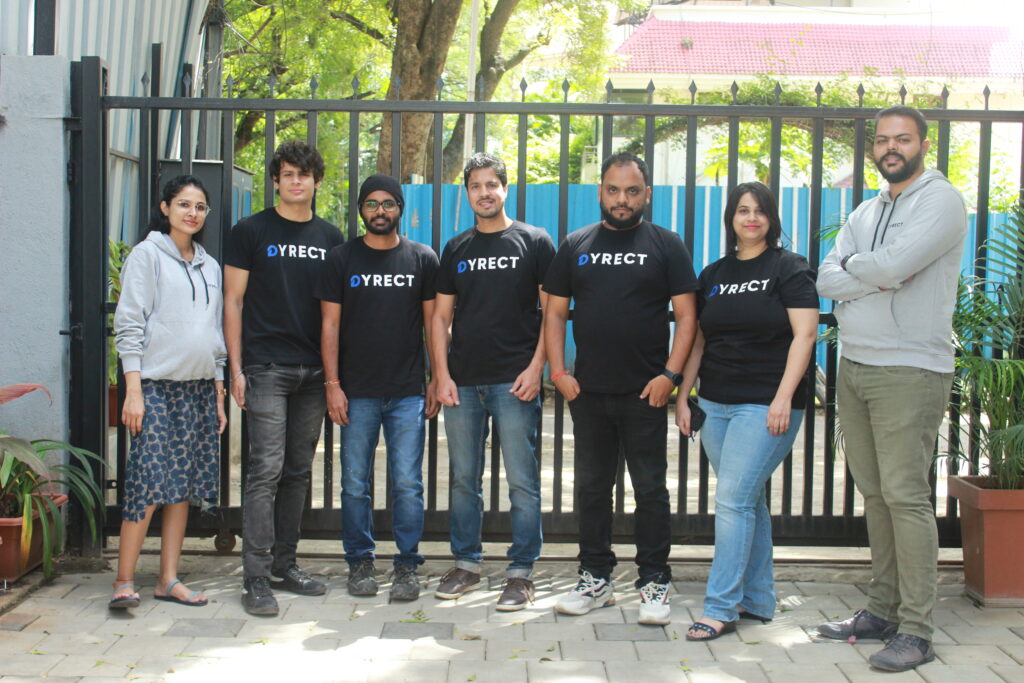
Abhishek and his team pivoted from the NeuroTags business to form the new entity, laser-focused on this newly identified, and much larger, opportunity. They understood that the post-purchase problem was a two-sided one, with immense friction for both brands and their customers.
The Brand’s Dilemma: The Cost Center & Data Void
“The warranty space has always been a back-office work,” Abhishek notes.
Abhishek says, “Customer complaints to the brands have increased a lot today. With that comes the cost of fulfilling the needs of the customer and their queries. So, post-purchase experience is a major cost center to the companies today.”
Internal teams were grappling with this new reality using a patchwork of inadequate tools. Support teams used help desk software like Zoho Desk or Freshdesk, which are great for communication but ill-equipped for the physical logistics of product repair and replacement. The actual service and repair process was often managed in simple Google Sheets or Excel!
The humble spreadsheet created a black hole of communication. A customer’s ticket would be passed to a repair team, but any updates were manually logged in a separate system, leaving the support agent (and by extension, the customer), completely in the dark.
Furthermore, for every product sold through Amazon or a retail store, the brand had no idea who the end customer was. This data void meant no opportunity for upselling, cross-selling, or building a long-term relationship.
The Consumer’s Frustration
For consumers, the shift from offline to online had an unintended consequence. The “instant gratification” of getting a faulty product replaced by a local retailer was replaced by a slow, agonizing online process.
Finding a proof of purchase from months ago, navigating a clunky website to file a claim, and then waiting days or weeks for a resolution became the norm.
“The experience of getting a product repaired and replaced is not as good as a retailer would have given when you have purchased online,” Abhishek states.
This friction was more than an annoyanc it was a brand-killer.
Dyrect’s core mission was born from this dual-sided pain (for consumers and brands). Their guiding principles were clear:
- How do we make the post-purchase journey profitable for brands?
- How do we make the post-purchase experience delightful for consumers?
Product Evolution - From QR Code to Intelligent Hub
Version 1: The Digital Warranty Card
“They would have first-party data of the customers, which can build the pipeline to upsell, cross-sell,” Abhishek explains.

Version 2: Building the Interoperable Service Layer
As Dyrect worked with these early customers, they moved deeper into their operations, observing the chaos of the support and repair process. This is where their user research methodology and deep collaboration with “design partners” shone.
Abhishek says, “We started talking to a lot of our customer post-sales teams. These people were maintaining all of their repair requests in a spreadsheet. There was no real-time communication coming back to the customer.”
This insight led to the next major evolution of the Dyrect platform. They built an integrated service and support module, effectively replacing the spreadsheet and creating a unified system of record. Now, when a support agent on Dyrect’s platform created a repair ticket, it was automatically assigned to the relevant repair team within the same system.
Every status update from the repair team, like “product received,” “under inspection,” “dispatched” was automatically communicated back to the customer and visible on the original ticket.
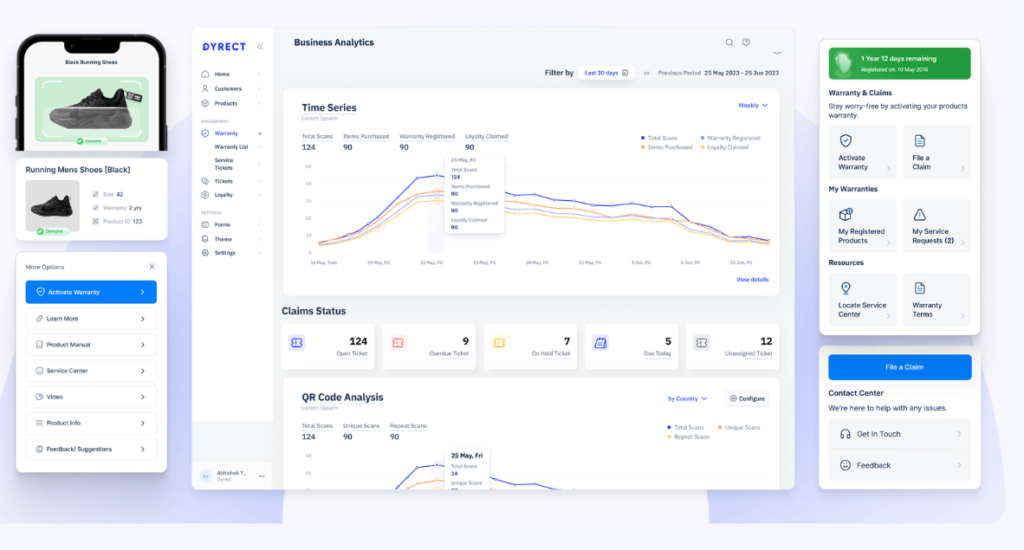
Abhishek says, “We provided an interface for the end customer to look at it. We call it a post-purchase hub, which sits on the brand's website, which will give a customer a track of all of this happening.”
This wasn’t built in a vacuum. They worked hand-in-glove with an automotive battery company in the US, a high-failure category where post-sales is a critical business function. By mapping their entire workflow and building the product around their real-world needs, Dyrect ensured they were creating a solution that was relevant, and not just a collection of features.
Version 3: The AI Leap and ‘Tara’
By late 2023, the GenAI wave was cresting. The pressure for every tech company to incorporate AI was immense, especially in the customer experience space. But here, Dyrect demonstrated a product maturity that belies their age. They resisted the urge to jump on the bandwagon. They didn’t see real value in superficial AI features like summarizing support tickets.
“We don't want to be early adopters in AI,” Abhishek states, a perspective many founders will find refreshing. “Us being a bootstrap company, we did not have that much cash to kind of sustain it. So we said, okay, let's start talking to our customers first.”
This led to the creation of Tara – Dyrect’s AI Agent. Tara is designed as an intelligent warranty advisor for brands and their consumers. It is set for its public launch on July 7th.
Tara is not just a chatbot.
The AI agent, Tara, is trained on a brand’s entire knowledge base (instruction manuals, how-to guides, and warranty policies). When a customer has an issue, Tara first attempts to troubleshoot the problem in real-time. If the problem is resolved, the customer gets what Abhishek repeatedly calls “instant gratification.”
If it’s not, Tara is authorized to take action.
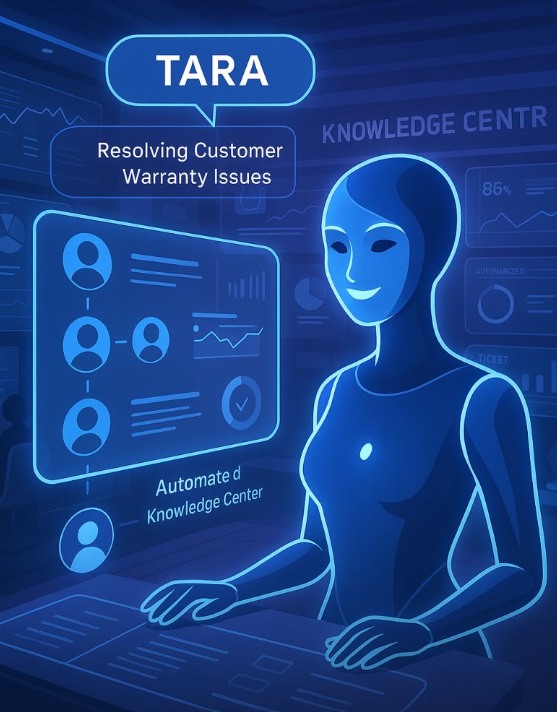
“If it is allowed to raise a claim request and authorized to do that, Tara will go to your Shopify and automatically go and place an order for a replacement on Shopify for you. We're just cutting the human loop from here, where there is instant gratification for the customer and there is less operational cost for the brand.”
Dyrect’s Go-To-Market Playbook
For a bootstrapped Indian startup, going global is a daunting task. Dyrect’s GTM strategy reveals a mix of leveraging existing relationships and scrappy, intelligent market entry tactics.
In India, their initial customer acquisition was relatively straightforward. They could tap into the network they had built with NeuroTags. These brands became their early adopters and crucial design partners.
The United States, however, was a different beast. In late 2022, with a new US entity, they had to build a pipeline from scratch. Their approach was unconventional and product-led, even before they had a full product.
Abhishek and his co-founder, Yogesh, divided responsibilities. Yogesh handled the existing India business while Abhishek took four months to focus solely on cracking the new market. Their strategy wasn’t to sell, but to learn.
“We started running ads on Google. We used to get leads from these geographies, and we got to talk to a lot of them.”
They weren’t pitching a finished solution. They were running ads with different messaging to test pain points and secure conversations with their ideal customer profile (ICP). This process of speaking to nearly 40 prospects in Europe and North America was their real-time market research.
This unorthodox approach yielded an unexpected dividend. One of the leads was from an agency owner looking for a solution for his client. After a 30-day conversation, that agency owner became Dyrect’s global head of sales for North America. They didn’t just find a customer, they found their market-entry partner.
Today, their acquisition is primarily inbound-led, driven by SEO and targeted Google Ads. Crucially, Abhishek remains deeply involved in global sales. This direct line to the market allows him to spot opportunities and feed insights directly back into the product roadmap.
One such insight was the discovery of regulatory levers for their product.
“In the US, there is one regulation in the baby products, wherein the product registration is mandated. This legal requirement makes Dyrect’s registration module not just a nice-to-have, but a compliance necessity. It instantly opened up a new market segment for us,” Abhishek explains.
Dyrect's North Star and the Business of Retention
For a bootstrapped company, financial discipline is paramount. Dyrect’s North Star metric is fittingly twofold, reflecting their dual mission.
1. For the Company (Financial Lens): Revenue.
“Since we are bootstrapped as a company, it’s important for us to measure on the financial metrics,” Abhishek states plainly.
Their goal of hitting $1 million in ARR this year keeps the entire team focused on sustainable growth.
2. For the Product (Outcome Lens): Resolution Time.
This is the ultimate measure of the value they deliver. “How are we doing on the resolution time for our partners?” is the question that drives their product decisions.
He gives a stark example: a typical troubleshooting process can take a cumulative 90 minutes of back-and-forth. “With Dyrect, that time is reduced to a third.”
Onboarding is a high-touch, critical process. An onboarding specialist stays with a new client for four to six weeks post-launch to ensure deep adoption. Because Dyrect becomes a core part of a brand’s operational infrastructure, it’s naturally sticky. This is evident in Dyrect’s low churn rate of just 3-4%.
"We use tools like Mixpanel to monitor product usage and proactively reach out to customers who show low engagement. Our GTM is primarily sales-led it revolves around maintaining personal relationships with clients," says Abhishek.
Their pricing model is also evolving to reflect the value they create. A brand can start with just the registration module as a self-serve product and add more capabilities as they grow. In the post-AI world, Abhishek shared that they are moving away from simple feature-based subscription (SaaS) tiers towards a more modular and outcome-based approach, inspired by companies like Intercom.
"We are exploring pricing based on outcomes, such as the number of claims resolved without human intervention," Abhishek explains.
This ties their revenue directly with the cost savings and efficiency gains they provide to their customers.
Building the Universal Post-Purchase Agent
“Can an AI agent work very similarly to a human technician of yours?” he asks. “Let's say your Aquaguard is not working. Can you put your camera on and the AI agent itself detects what the issue is, without you even typing in troubleshooting. It's gonna auto-analyze, it'll tell you what the problem is and get to your solution.”
This multi-modal agent, one that can see, hear, and converse, is what he calls the “universal agent.” It represents the ultimate form of instant gratification, a world where you don’t even need a screen or a keyboard to resolve a product issue.
He believes that while horizontal AI platforms will consolidate, vertical AI products like Dyrect will be essential. The generic capabilities of a large language model are not enough. Deep domain knowledge and workflow integration are where the real value lies.

